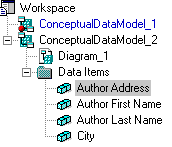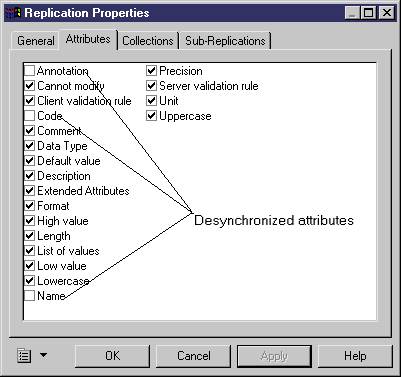While shortcuts allow you to reference objects in other models, the complete definition of the target object can only be accessed if the target model is open, and you cannot locally redefine any of the properties of the target object. For example, in one model you may need a Client table with Name and detailed Address columns, while in another you may need only the Name column. In this case, instead of using a shortcut, you could replicate the object.
You should use shortcuts when you want to reference an object in order to share it between different models or packages. The shortcut is not a local copy of the target object and cannot be modified independently of its target object. You should use object replications when you want to have a local copy of an object that can also diverge from its original object.
When you replicate an object, PowerDesigner creates a complete copy (or replica) of the object. The replica retains the name, code, type and Id of the original object and is automatically updated when the original is modified.
A replica looks exactly like other objects in the Browser and diagram, but its property sheet is, by default, uneditable, because all its properties are synchronized with the original:

You can desynchronize any property that you want to change, while retaining synchronization of the others.
The link to and synchronization with the original object is maintained by a replication, which is not visible in the Browser or diagram, but whose properties are accessible via the List of Replications.

You can create replicas for most PowerDesigner objects (including composite objects and other replicas). When you replicate an object, its sub-objects are replicated as well. You cannot create replicas of diagrams, links, packages, or the following objects:
|
Module |
Object |
|---|---|
|
All |
Diagrams, Links, Packages |
|
RQM |
- |
|
EAM |
- |
|
BPM |
Starts, ends, synchronizations |
|
CDM/LDM |
Associations, Inheritances |
|
PDM |
Privileges |
|
DMM |
Replications not supported |
|
OOM |
Starts, ends, synchronizations, interaction fragments, interaction references, messages |
|
XSM |
- |